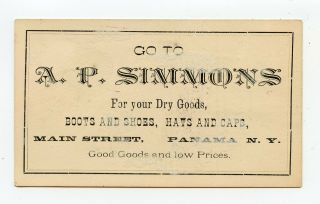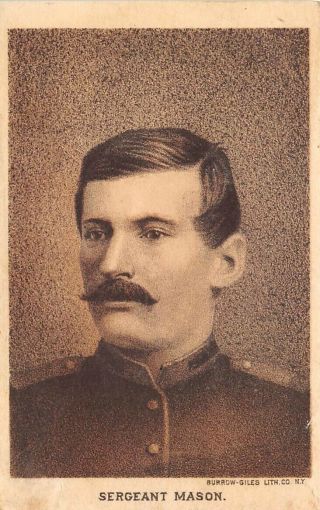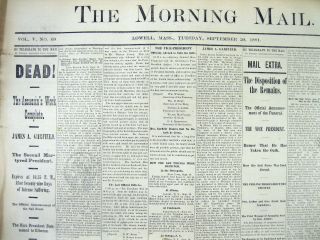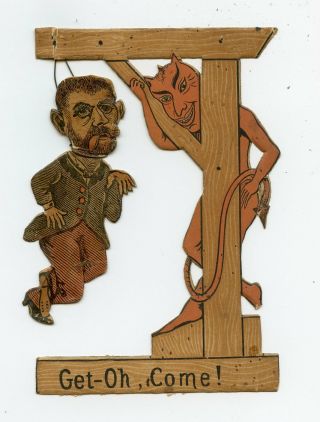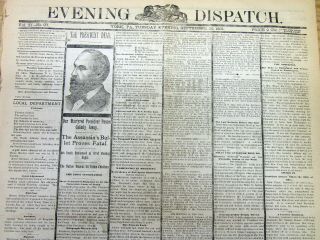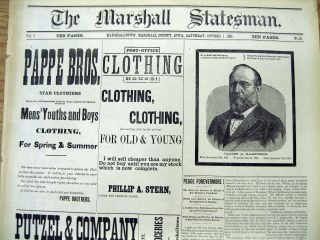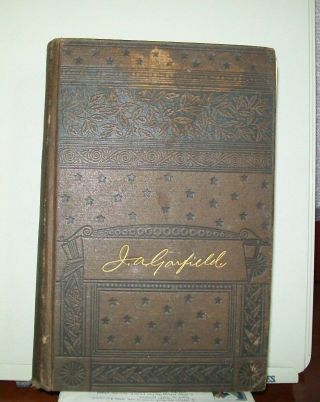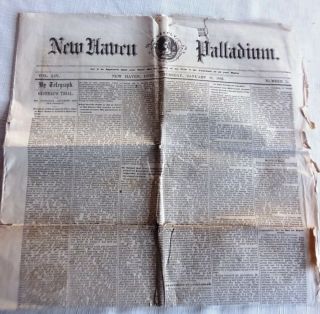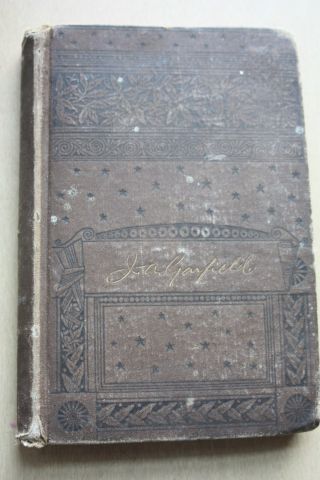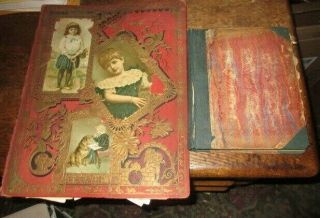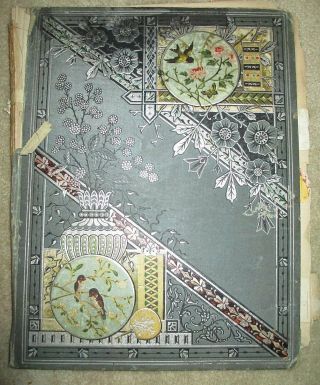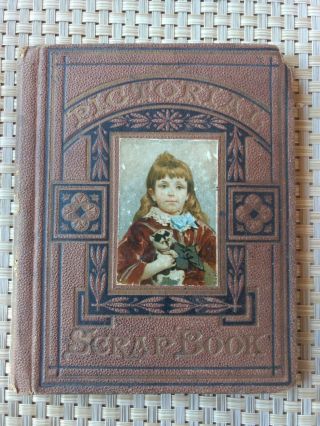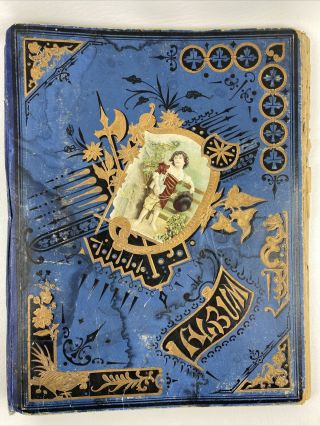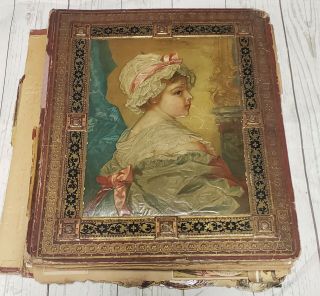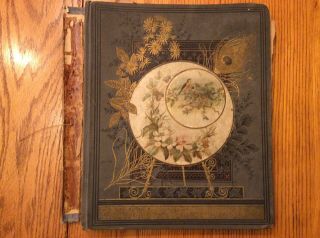CHARLES GUITEAU ASSASSIN OF PRESIDENT JAMES GARFIELD 1881 POLITICAL TRADE CARD
Item History & Price
| Reference Number: Avaluer:15394831 |
This card measures almost 2 and three-quarter inches wide and about 4 a...nd one-half inches tall.
Nice condition except for some minor corner wear upper right corner. No tape. No pin holes. No paper loss. There is some old paper residue on the reverse side from when this card was removed from a Victorian scrapbook.
From Wikipedia:
Charles Julius Guiteau September 8, 1841 – June 30, 1882) was an American writer and lawyer who assassinated United States President James A. Garfield on July 2, 1881. Guiteau falsely believed he had played a major role in Garfield's victory, for which he should be rewarded with a consulship. He was so offended by the Garfield administration's rejections of his applications to serve in Vienna or Paris that he decided to kill Garfield, and shot him at the Baltimore and Potomac Railroad Station in Washington, D.C. Garfield died two months later from infections related to the wounds. In January 1882, Guiteau was sentenced to death for the crime, and was hanged five months later. Guiteau was born in Freeport, Illinois, the fourth of six children of Jane August (née Howe) and Luther Wilson Guiteau, whose family was of French Huguenot ancestry. He moved with his family to Ulao, Wisconsin (near current-day Grafton), in 1850 and lived there until 1855, when his mother died. Soon after, Guiteau and his father moved back to Freeport. He inherited $1, 000 ($28, 000 today) from his grandfather as a young man and went to Ann Arbor, Michigan, to attend the University of Michigan. Due to inadequate academic preparation, he failed the entrance examinations. Despite cramming in French and algebra at Ann Arbor High School, during which time he received numerous letters from his father concerning his progress, he quit, and in June 1860 joined the utopian religious sect the Oneida Community, in Oneida, New York, with which Guiteau's father already had close affiliations. According to Brian Resnick of The Atlantic, Guiteau "worshiped" the group's founder, John Humphrey Noyes, once writing that he had "perfect, entire and absolute confidence in him in all things". Despite the "group marriage" aspects of that sect, he was generally rejected during his five years there, and his name was turned into a play on words to create the nickname "Charles Gitout" (get out). He left the community twice. After leaving the first time, he went to Hoboken, New Jersey, and attempted to start a newspaper based on the Oneida religion called The Daily Theocrat. This failed and he returned to Oneida, only to leave again and file lawsuits against Noyes. Guiteau's father, embarrassed, wrote letters in support of Noyes, who had considered Guiteau irresponsible and insane.Guiteau worked as a clerk at a Chicago law firm and passed a cursory examination to attain admission to bar. He was not successful as a lawyer, arguing only one case in court, and the bulk of his business was in bill collecting. In 1869 he met and married librarian Annie Bunn. She later detailed his dishonest dealings, describing how he would keep disproportionate amounts from his collections and rarely give the money to his clients. In 1872, Guiteau and his wife moved to New York City one step ahead of bill collectors and dissatisfied clients. Guiteau took an interest in politics and identified with the Democratic Party. He supported Horace Greeley, the Liberal Republican and Democratic candidate for president against incumbent Republican Ulysses S. Grant. Guiteau prepared a disorganized speech in support of Greeley, which he delivered once. Greeley was badly defeated, but during the campaign Guiteau became convinced that if Greeley won, he would appoint Guiteau as Minister to Chile. Guiteau was physically abusive with his wife; when she wanted a divorce in 1874, he obliged by having sex with a prostitute who then testified to his infidelity. He next turned to theology. He published a book on the subject called The Truth which was almost entirely plagiarized from the work of Noyes. By 1875, Guiteau's father was convinced that his son was possessed by Satan. Conversely, Guiteau himself became increasingly convinced that his actions were divinely inspired, and that his destiny was to "preach a new Gospel" like Paul the Apostle. He wandered from town to town lecturing to any and all who would listen to his religious ramblings, and in December 1877 gave a lecture at the Congregational Church in Washington, D.C. Guiteau spent the first half of 1880 in Boston, which he left owing money and under suspicion of theft. On June 11, 1880, he was a passenger on the SS Stonington when it collided with the SS Narragansett at night in heavy fog. The Stonington was able to return to port, but the Narragansett burned to the waterline and sank, with significant loss of life. Although none of his fellow passengers on the Stonington were injured, the incident left Guiteau believing that he had been spared for a higher purpose. Guiteau's interest then turned again to politics. During the 1880 presidential campaign, the Republican Party was largely split into factions – the Stalwarts, led by Roscoe Conkling, who supported Ulysses S. Grant for a third term, and the Half-Breeds, who supported James G. Blaine. Guiteau decided to support the Stalwarts and wrote a speech in support of Ulysses S. Grant called "Grant against Hancock", which he revised to "Garfield against Hancock" after Garfield (not affiliated with either faction) won the Republican nomination. Ultimately, Guiteau changed little more than the title and any mention of Grant in the speech itself. The speech was delivered at most twice, and printed copies were passed out to members of the Republican National Committee at their summer 1880 meeting in New York, but Guiteau believed himself to be largely responsible for Garfield's victory over Democrat Winfield Scott Hancock that November. He insisted he should be awarded a consulship for his supposedly vital assistance, first asking for Vienna, then deciding that he would rather have the one in Paris. Guiteau's personal requests to Garfield and his cabinet as one of many job seekers who lined up every day to see them in person were continually rejected, as were his numerous letters. By the early days of Garfield's administration, which commenced in March 1881, Guiteau was living in Washington, D.C., destitute and forced to sneak from rooming house to rooming house without paying for his lodging and meals, and to walk around the cold, snowy city in a threadbare suit, without a coat, hat or boots. He spent his days in hotel lobbies reading discarded newspapers to keep track of the schedules of Garfield and his cabinet and making use of the hotels' complimentary stationery to write them letters pressing his claim for a consulship. In the spring, he was still in Washington, and on May 14, 1881, he once more encountered Secretary of State James G. Blaine in person and inquired about a consular appointment; an exasperated Blaine finally snapped "Never speak to me again on the Paris consulship as long as you live!"Guiteau considered himself a loyal Republican and a Stalwart, and his narcissistic personality convinced him that his work for the party was critical to Garfield's election to the presidency. Later convinced that Garfield was going to destroy the Republican Party by scrapping the patronage system, and distraught after his final encounter with Blaine, he decided the only solution was to remove Garfield and elevate Vice President Chester A. Arthur, an acolyte of Senator Roscoe Conkling, the Stalwart leader who managed Grant's 1880 campaign and was not on friendly terms with Garfield.Guiteau felt that God told him to kill the president; he felt that such an act would be a "removal" as opposed to an assassination. He also felt that Garfield needed to be killed to rid the Republican Party of Blaine's influence. Borrowing $15 from George Maynard, a relative by marriage, Guiteau set out to purchase a revolver. He spent the next few weeks in target practice – the recoil from the revolver almost knocked him over the first time he fired it. Guiteau's pistol was recovered after the assassination, and even photographed by the Smithsonian in the early 20th century, but it has since been lost. On one occasion, Guiteau trailed Garfield to the railway station as the President was seeing his wife off to a beach resort in Long Branch, New Jersey, but he decided to postpone his plan because Garfield's wife Lucretia was in poor health and Guiteau did not want to upset her. Having been alerted to the president's schedule by a newspaper article, on July 2, 1881, he lay in wait for Garfield at the since-demolished Baltimore and Potomac Railroad Station, getting his shoes shined, pacing, and engaging a cab to take him to the station later. As Garfield entered the station, looking forward to a vacation with his wife in Long Branch, Guiteau stepped forward and shot Garfield twice from behind, the second shot piercing the first lumbar vertebra but missing the spinal cord. As he surrendered to authorities, Guiteau said: "I am a Stalwart of the Stalwarts. ... [Chester A.] Arthur is president now!"After a long, painful battle with infections, possibly brought on by his doctors' poking and probing the wound with unwashed hands and non-sterilized instruments, Garfield died on September 19, eleven weeks after being shot. Most modern physicians familiar with the case state that Garfield would have easily recovered from his wounds with sterile medical care, which was common in the United States a decade later, while Candice Millard argues that Garfield would have survived Guiteau's bullet wound had his doctors simply left him alone. However, Garfield's biographer Allan Peskin stated that medical malpractice did not contribute to Garfield's death; the inevitable infection and blood poisoning that would ensue from a deep bullet wound resulted in damage to multiple organs and spinal bone fragmentation.
Once Garfield died, the government officially charged Guiteau with murder. He was formally indicted on October 14, 1881, on the charge of murder, which was previously attempted murder after his arrest. Guiteau pleaded not guilty to the charge. The trial began on November 17, 1881, in Washington, D.C. The presiding judge in the case was Walter Smith Cox. Although Guiteau would insist on trying to represent himself during the entire trial, the court appointed Leigh Robinson to defend Guiteau. In less than a week of trial, Robinson retired from the case. George Scoville then became lead counsel for the defense. While Scoville's legal experience lay in land title examination, he had married Guiteau's sister and was thus obliged to defend him in court when no one else would. Wayne MacVeagh, the U.S. Attorney General, served as the chief prosecutor. MacVeagh named five lawyers to the prosecution team: George Corkhill, Walter Davidge, retired judge John K. Porter, Elihu Root, and E.B. Smith.[35][36]Guiteau's trial was one of the first high-profile cases in the United States where a defense based on a claim of temporary insanity was considered. Guiteau vehemently insisted that while he had been legally insane at the time of the shooting (because God had taken away his free will), he was not really medically insane, which was one of the major causes of the rift between him and his defense lawyers. Edward Charles Spitzka, a leading alienist, testified as an expert witness. Spitzka had stated that it was clear "Guiteau is not only now insane, but that he was never anything else." While on the stand, Spitzka testified that he had "no doubt" that Guiteau was both insane and "a moral monstrosity". Spitzka came to the conclusion that Guiteau had "the insane manner" he had so often observed in asylums, adding that Guiteau was a "morbid egotist" with "a tendency to misinterpret the real affairs of life". He thought the condition to be the result of "a congenital malformation of the brain". George Corkhill, who was the District of Columbia's district attorney and on the prosecuting team, summed up the prosecution's opinion of Guiteau's insanity defense in a pre-trial press statement that also mirrored public opinion on the issue. He's no more insane than I am. There's nothing of the mad about Guiteau: he's a cool, calculating blackguard, a polished ruffian, who has gradually prepared himself to pose in this way before the world. He was a deadbeat, pure and simple. Finally, he got tired of the monotony of deadbeating. He wanted excitement of some other kind and notoriety... and he got it. Guiteau became something of a media sensation during his entire trial for his bizarre behavior, which included his frequently cursing and insulting the judge, most of the witnesses, the prosecution, and even his defense team, as well as formatting his testimony in epic poems which he recited at length, and soliciting legal advice from random spectators in the audience via passed notes. He dictated an autobiography to the New York Herald, ending it with a personal ad for "a nice Christian lady under 30 years of age". He was oblivious to the American public's hatred of him, even after he was almost assassinated twice himself. He frequently smiled and waved at spectators and reporters in and out of the courtroom, seemingly happy to be the center of attention for once in his life.Guiteau sent a letter in which he argued that Arthur should set him free because he had just increased Arthur's salary by making him president. At one point, Guiteau argued before Judge Cox that Garfield was killed not by the bullets but by medical malpractice ("The doctors killed Garfield, I just shot him"). Throughout the trial and up until his execution, Guiteau was housed at St. Elizabeths Hospital in the southeastern quadrant of Washington, D.C. While in prison and awaiting execution, Guiteau wrote a defense of the assassination he had committed and an account of his own trial, which was published as The Truth and the Removal.To the end, Guiteau was making plans to start a lecture tour after his perceived imminent release and to run for president himself in 1884, while at the same time continuing to delight in the media circus surrounding his trial. He was found guilty on January 25, 1882. After the guilty verdict was read, Guiteau stepped forward, despite his lawyers' efforts to tell him to be quiet, and yelled at the jury saying "You are all low, consummate jackasses!" plus a further stream of curses and obscenities before he was taken away by guards to his cell to await execution. Guiteau appealed his conviction, but his appeal was rejected. Twenty-nine days before his execution, Guiteau composed a lengthy poem asserting that God had commanded him to kill Garfield to prevent Secretary James G. Blaine's "scheming" to war with Chile and Peru. Guiteau also claimed in the poem that Chester A. Arthur knew the assassination had saved the United States and that Arthur's refusal to pardon him was the "basest ingratitude". Guiteau also (incorrectly) presumed that President Arthur would pressure the Supreme Court into hearing his court appeal. He was hanged on June 30, 1882, in the District of Columbia, just two days before the first anniversary of the shooting.While being led to his execution, Guiteau was said to have continued to smile and wave at spectators and reporters, happy to be at the center of attention to the very end. He notoriously danced his way to the gallows and shook hands with his executioner. On the scaffold, as a last request, he recited a poem called "I am Going to the Lordy", which he had written during his incarceration. He had originally requested an orchestra to play as he sang his poem, but this request was denied. After he finished reading his poem, a black hood was placed over the smiling Guiteau's head and moments later the gallows trapdoor was sprung, the rope breaking his neck instantly with the fall. Guiteau's body was not returned to his family, as they were unable to afford a private funeral, but was instead autopsied and buried in a corner of the jailyard. Upon his autopsy it was discovered that Guiteau had the condition known as phimosis, an inability to retract the foreskin, which at the time was thought to have caused the insanity that led him to assassinate Garfield. With tiny pieces of the hanging rope already being sold as souvenirs to a fascinated public, rumors immediately began to swirl that jail guards planned to dig up Guiteau's corpse to meet demands of this burgeoning new market. Fearing scandal, the decision was made to disinter the corpse. The body was sent to the National Museum of Health and Medicine in Maryland, which preserved Guiteau's brain as well as his enlarged spleen discovered at autopsy and bleached the skeleton. These were placed in storage by the museum. Parts of Guiteau's brain remain on display in a jar at the Mütter Museum in Philadelphia.
James Abram Garfield (November 19, 1831 – September 19, 1881) was the 20th president of the United States, serving from March 4, 1881 until his death by assassination six and a half months later. He was the first sitting member of Congress to be elected to the presidency, and remains the only sitting House member to gain the White House. Garfield entered politics as a Republican in 1857. He served as a member of the Ohio State Senate from 1859 to 1861. Garfield opposed Confederate secession, served as a major general in the Union Army during the American Civil War, and fought in the battles of Middle Creek, Shiloh, and Chickamauga. He was first elected to Congress in 1862 to represent Ohio's 19th District. Throughout Garfield's extended congressional service after the Civil War, he firmly supported the gold standard and gained a reputation as a skilled orator. Garfield initially agreed with Radical Republican views regarding Reconstruction, but later favored a moderate approach for civil rights enforcement for freedmen.At the 1880 Republican National Convention, Senator-elect Garfield attended as campaign manager for Secretary of the Treasury John Sherman, and gave the presidential nomination speech for him. When neither Sherman nor his rivals – Ulysses S. Grant and James G. Blaine – could get enough votes to secure the nomination, delegates chose Garfield as a compromise on the 36th ballot. In the 1880 presidential election, Garfield conducted a low-key front porch campaign and narrowly defeated Democrat Winfield Scott Hancock.Garfield's accomplishments as president included a resurgence of presidential authority against senatorial courtesy in executive appointments, purging corruption in the Post Office, and appointing a U.S. Supreme Court justice. He enhanced the powers of the presidency when he defied the powerful New York senator Roscoe Conkling by appointing William H. Robertson to the lucrative post of Collector of the Port of New York, starting a fracas that ended with Robertson's confirmation and Conkling's resignation from the Senate. Garfield advocated agricultural technology, an educated electorate, and civil rights for African Americans. He also proposed substantial civil service reforms; those reforms were eventually passed by Congress in 1883 and signed into law by his successor, Chester A. Arthur, as the Pendleton Civil Service Reform Act.On July 2, 1881, Garfield was shot at the Baltimore and Potomac Railroad Station in Washington D.C. by Charles J. Guiteau, a disappointed and delusional office seeker. The wound was not immediately fatal for Garfield, but a team of doctors, who were preoccupied with finding the bullet, probed the wound with dirty, unsterilized fingers and instruments in vain. Garfield ultimately succumbed on September 19, 1881, from infections caused by his doctors. Guiteau was executed for the murder of Garfield in June 1882. Some historians choose to forgo listing Garfield in rankings of U.S. presidents because of the short duration of his presidency.Having just been elected to the Senate with Sherman's support, Garfield entered the 1880 campaign season committed to Sherman as his choice for the Republican presidential nominee. Even before the convention began, however, a few Republicans, including Wharton Barker of Philadelphia, thought Garfield the best choice for the nomination. Garfield denied any interest in the position, but the attention was enough to make Sherman suspicious of his lieutenant's ambitions. Besides Sherman, the early favorites for the nomination were Blaine and former President Grant, but several other candidates attracted delegates as well. As the convention began, Senator Roscoe Conkling of New York, the floor leader for the Grant forces (known as the Stalwart faction), proposed that the delegates pledge to support the eventual nominee in the general election. When three West Virginia delegates declined to be so bound, Conkling sought to expel them from the convention. Garfield rose to defend the men, giving a passionate speech in defense of their right to reserve judgment. The crowd turned against Conkling, and he withdrew the motion. The performance delighted Garfield's boosters, who now believed more than ever that he was the only man who could attract a majority of the delegates' votes. After speeches in favor of the other front-runners, Garfield rose to place Sherman's name in nomination; his nominating speech was well-received, but the delegates mustered little excitement for the idea of Sherman as the next president. The first ballot showed Grant leading with 304 votes and Blaine in second with 284; Sherman's 93 placed him in a distant third. Subsequent ballots quickly demonstrated a deadlock between the Grant and Blaine forces, with neither having the 379 votes needed for nomination. Jeremiah McLain Rusk, a member of the Wisconsin delegation, and Benjamin Harrison, an Indiana delegate, sought to break the deadlock by shifting a few of the anti-Grant votes to a dark horse candidate—Garfield. Garfield gained 50 votes on the 35th ballot, and the stampede began. Garfield protested to the other members of his Ohio delegation that he had not sought the nomination and had never intended to betray Sherman, but they overruled his objections and cast their ballots for him. In the next round of voting, nearly all of the Sherman and Blaine delegates shifted their support to Garfield, giving him 399 votes and the Republican nomination. Most of the Grant forces backed the former president to the end, creating a disgruntled Stalwart minority in the party. To obtain that faction's support for the ticket, former New York customs collector Chester A. Arthur, a member of Conkling's political machine, was chosen as the vice presidential nominee.Practical differences between the candidates were few, and Republicans began the campaign with the familiar theme of waving the bloody shirt: reminding Northern voters that the Democratic Party was responsible for secession and four years of civil war, and that if Democrats held power they would reverse the gains of that war, dishonor Union veterans, and pay Confederate veterans pensions out of the federal treasury. With fifteen years having passed since the end of the war, and Union generals at the head of both tickets, the bloody shirt was of diminishing value in exciting the voters. With a few months to go before the election, the Republicans switched tactics to emphasize the tariff. Seizing on the Democratic platform's call for a "tariff for revenue only", Republicans told Northern workers that a Hancock presidency would weaken the tariff protection that kept them in good jobs. Hancock made the situation worse when, attempting to strike a moderate stance, he said, "The tariff question is a local question." The ploy proved effective in uniting the North behind Garfield. In the end, fewer than two thousand votes, of the more than 9.2 million popular votes cast, separated the two candidates, but in the Electoral College Garfield had an easy victory over Hancock, 214 to 155.
The Republicans nominated James A. Garfield, a Congressman from Ohio and a skillful politician. Hancock and the Democrats expected to carry the Solid South, but needed to add a few of the Northern states to their total to win the election. The practical differences between the parties were few, and the Republicans were reluctant to attack Hancock personally because of his heroic reputation. The one policy difference the Republicans were able to exploit was a statement in the Democratic platform endorsing "a tariff for revenue only". Garfield's campaigners used this statement to paint the Democrats as unsympathetic to the plight of industrial laborers, a group that would benefit by a high protective tariff. The tariff issue cut Democratic support in industrialized Northern states, which were essential in establishing a Democratic majority. In the end, the Democrats and Hancock failed to carry any of the Northern states they had targeted, with the exception of New Jersey. Hancock lost the election to Garfield. Garfield polled only 39, 213 more votes than Hancock, the popular vote being 4, 453, 295 for Garfield and 4, 414, 082 for Hancock. The electoral count, however, had a much larger spread: Garfield polled 214 electoral votes and Hancock only 155.
I will be listing many other Victorian Trade Cards from a 40 year old collection so please check out my other e-bay listings.
FREE SHIPPING. GUARANTEED ORIGINAL ITEM. FREE SHIPPING BY REGULAR MAIL TO U.S.A.DELIVERY TAKES ABOUT 15 DAYS AND SOMETIMES A BIT LONGER DEPENDING ON THE POST OFFICE.ITEM WILL BE MAILED WHEN PAYMENT IS RECEIVED.
Buyer will be responsible for any custom and/or duty fees.Can be returned if you are not fully satisfied.




